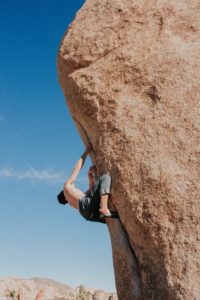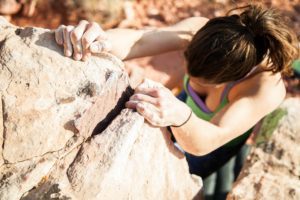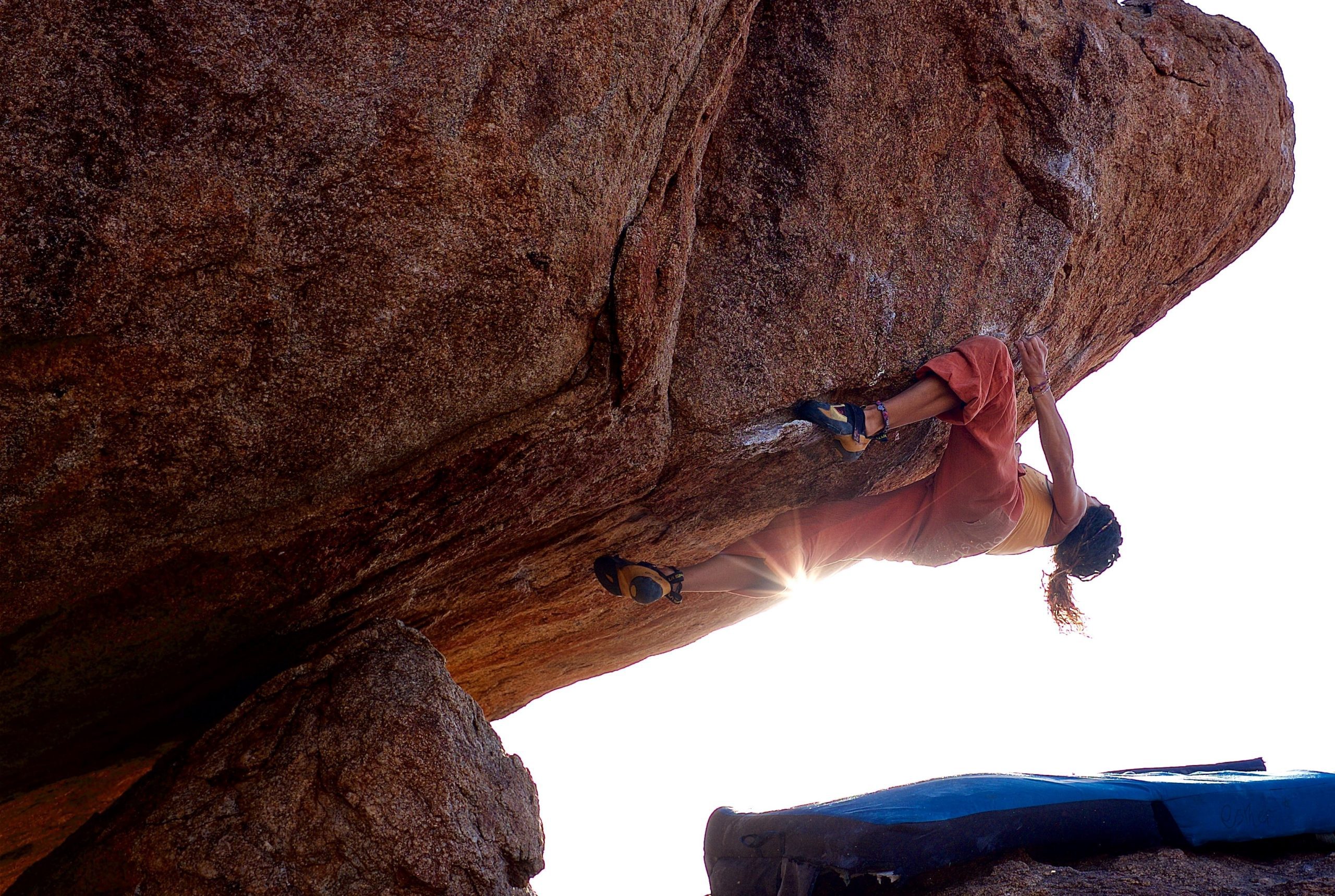Many of you may have trepidations on knowing how to start bouldering outdoors. There are lots of things you have to consider, however, it isn’t all that difficult and is a fantastic way to truly enjoy the sport. Of course, inside has its place, yet the feeling of real rock underneath your fingers in indescribable. See some of our top tips below.
Five Things You Need to Start Bouldering Outdoors

There are a number of things you need to make sure you have in your possession before you start bouldering outdoors. In the following paragraphs, we will list them all for you so you have a checklist of what you need to take with you!
1. Outdoor Bouldering Shoes
A pretty obvious start here, nevertheless it goes without saying that some shoes are better indoors than outdoors and vice versa. That is why you need a dedicated pair to take with you to the rocks! Our list of best bouldering shoes can help you out with your choice.
At the end of the day, it is a personal preference. But if you have never been outside before, we recommend taking a couple of pairs in order to see how they perform.
2.Bouldering Mats/Crash Pads
When you climb inside, there is already protection in the form of big soft mats throughout the gym. This isn’t the case with nature. That is why you have to take your own crash pads with you! It is best to have a few, especially for those dicey problems. You will also need a trusted spotter and hopefully, they will own a mat too!
What you need to consider is the walk to the crag/boulder area. You have to bring the mats with you and it can get rather laboursome if you haven’t stacked them on your back properly!
3. A Brush
Some people will already have a brush for inside, but many won’t. When bouldering outside it is integral that you have one to clean your route before you start. Unline inside, no-one is tasked with maintaining them. They get a lot of wear and tear, so getting rid of the extra grease and chalk is imperative to being able to top out a problem.
Another thing we advise is making sure your shoes are clean before you try. That way you will be able to trust your feet, as you don’t want to slip on a highball!
4. Chalk
This is another thing that most will already own, but you still need to take it outside with you! Bouldering outdoors is made easier when you are not slipping all over the place. We recommend taking your chalk bucket/bag that you use inside with you. You don’t need anything special here, just something to keep your greasy fingers from slipping!
5. Warm Clothing
Ok, if you live in the Mediterranean or somewhere else warm, you might not need this, but for those who are less fortunate, this is something that is often overlooked. Between climbs, you’ll be sitting around, in an exposed area and it can get bloody cold! That’s why you need a warm hat, jacket, and approach shoes to get you through.
Oh, don’t forget to pack something nice to eat and drink too! You’ll be thankful you did after a long day of bouldering outside.
What Else Should You Know?
Bouldering outdoors is a risky business, even so, there are a number of things you can employ to make sure you experience is a safe and enjoyable one. Some of the main things you can find out below:
Learn How to Spot
The main goal of spotting is to protect the climbers head as they fall, not to stop them from hitting the ground. You should guide them to that pads ensuring their fall is broken in a clean and safe manner. There are many guides out there on how to spot correctly, but as always practice makes perfect. As there is no protection outside, this is integral to climber safety.
Practice Topping Out

Whenever you climb indoors, you rarely need to top out. Outside it is much different. You need to get over the top of your problem every time. This can be particularly difficult if there isn’t anything to hold on to! What’s more, you could be several metres high at this point and your nerves will be jangling.
That is why you need to know the best ways to get over the edge. Practising on easier and lower routes is a good way to go about it.
Check the Downclimb
Imagine climbing up to the top of the boulder, and then realising the only way back down is the way you came up! For the lower grades, this would be no problem, but imagine if the hardest route back down was a V8! That is why it is important to check if there is an easy and accessible way down before you start climbing up!
Take Care of Your Fingers
When you are bouldering outdoors, it is easy to get excited and forget about your fingers. But, unlike plastic, bouldering on rock can be very tough on the fingers. Cracks, flappers, and cuts can all stop a boulderer in their tracks.
You need to build up your tolerance and take care of your hands. Moisturising, sanding down callouses, and generally keeping your fingers in good condition is essential to being able to enjoy the outdoors.
Bouldering Outdoors: Respect the Rock and Have Fun!
Everyone here at TopBouldering encourages best practices when it comes to bouldering outdoors, that is especially important when bouldering in Northumberland – where there is lots of sandstone. There are a number of things you need to do. Firstly, never alter a route by breaking stuff off. Secondly, don’t use a wire brush as it will damage the rock. Thirdly, make sure your shoes are clean when you attempt a problem. Lastly, take all rubbish with you that you brought with you to the rock.
If we respect the rock, then it will be here for generations to come. If not, then it won’t. It is as simple as that. With more and more people turning to the sport, this philosophy will be very important in the coming years.
Overall, we encourage you to enjoy the outdoors and have fun. Be safe, and climb hard. It is the most rewarding experience to be had.

